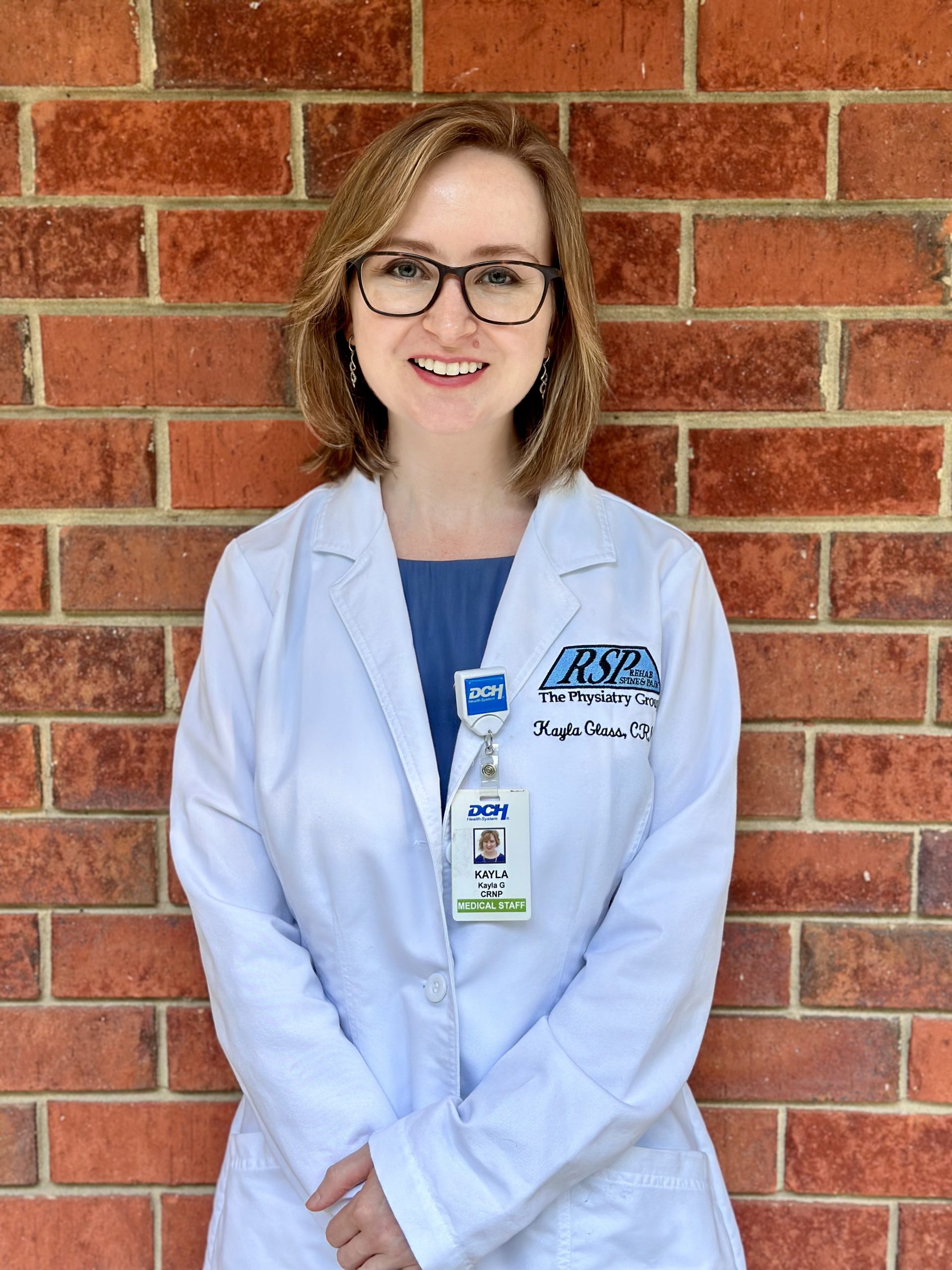Faculty practice provides faculty members with the opportunity to be engaged in their area of expertise. As leaders of exemplary, innovative, and culturally proficient faculty engagement, faculty members fulfill the mission of the UA Capstone College of Nursing’s Faculty Practice Committee. The Faculty Practice Committee strives to increase the visibility of the school of nursing by spotlighting the practice of faculty members as they practice in community agencies. Practice sites are diverse and represent the expertise and background preparation of faculty engaged in faculty practice. Faculty “spotlights” are updated multiple times annually to showcase the exceptional work of faculty practice members. Be sure to return to this webpage in the future to learn about the practice of other faculty members!

Kayla Glass, DNP, FNP-C, CRRN
Clinical Assistant Professor
I am clinical assistant professor teaching primarily in pharmacology and community health.
Since 2016, I have worked as a nurse practitioner in a physiatry group which covers the inpatient rehabilitation setting as the admitting provider for physical medicine and rehabilitation (PM&R) at DCH Rehabilitation Center, acute care setting as a consulting provider for PM&R at DCH RMC and NMC, and skilled nursing facilities as a consulting provider for PM&R at several of the local nursing homes.
Our practice serves patients 18 years and older with PM&R needs on top of medical complexity, for example: stroke (CVA), traumatic brain injury (TBI), spinal cord injury (SCI), neuromuscular or rheumatological disorders, major multiple trauma, amputation, joint replacement, cardiac and respiratory decline, or generalized debility.
My day typically starts out with inpatient rehabilitation discharges followed by admissions, patient & staff concerns, and documentation of inpatient progress notes and acute hospital consultation notes. Most importantly, our physiatry group actively collaborates as a team, and all team members are equally integral to this process in order to provide optimal patient care – registered nurses, physical therapists, occupational therapists, speech pathologists, case managers/social workers, and staff and unit managers in addition to our medical provider group of nurse practitioners, physician assistant, and physician.
Our practice is always looking to advance its practice, outreach, and provide the best care for its patients; this can only be done with evidence-based practice. We are constantly adjusting medical treatment and therapy treatment based on everchanging guidelines, especially those pertaining to CVA, TBI, SCI, surgery, and COVID. New technology, adaptive equipment, and assistive devices have also been upgraded as supporting research comes available. Lastly, we continue to integrate interdisciplinary care into our treatment approach which is supported by evidence-based literature and patient satisfaction.
Rehabilitation services are often overlooked or undervalued in the continuum of patient care. With time, I hope to see growth in awareness and use of these services. I am certified as a rehabilitation nurse and remain active in our rehabilitation nursing organization serving on national committees. I encourage any nurse or other medical discipline to become certified in their specialty and actively advocate for growth and development.
I am very thankful for my faculty practice which allows me to continue to gain experience as a nurse practitioner. In the future, I hope to continue my faculty practice in rehabilitation. I also plan to introduce research concerning strokes and gait stability in my faculty practice.
The most concerning change that I have seen is insurance coverage determining shorter acute care hospitalizations leading to earlier discharge of fragile patients as well as limiting rehabilitation options. Alarmingly, we are treating younger and more medically complex patients. Conversely, we are also seeing growth of an aging population who wish to “age at home”. Both concerns demonstrate the need for rehabilitation service expansion to better serve our local community.
My faculty practice provides the opportunity for personal and professional growth, interdisciplinary collaboration, professional and student mentorship, and service to our community. Through this experience, I hope to become a better teacher and example for our students.